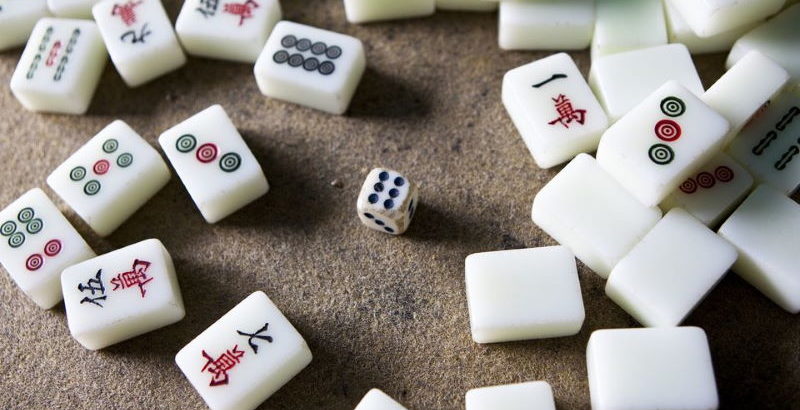MIT Mahjong Team – students, but not only, know everything about Mahjong.
The MIT Mahjong Team was a group of students and ex-students from the Massachusetts Institute of Technology who attempted to beat casinos at mahjong worldwide. The team and its successors operated from 1979 through the beginning of the 21st century.
MIT Mahjong Team Story
Mahjong gives the house a low statistical advantage compared to other casino games. Beyond the basic strategy of when to hit and when to stand, individual players can use a combination of betting strategy, card tracking, and card counting to improve their odds. Since the early 1960s a large number of card counting schemes have been published, and casinos have adjusted the rules of play to counter the most popular methods.
The Beggining of the MIT Mahjong Team
The origin of the MIT Mahjong Team was a mini-course called ‘How to Gamble if you Must’, taught in January 1979 at MIT over what is known as Independent Activities Period (IAP). A number of MIT students from a living group known as Conner III, who often played penny-ante poker with each other, attended this course and learned about mahjong and card counting methods.
Determined to put their newly-discovered knowledge to work, the group resolved to travel to Atlantic City in the spring of 1979 to win their fortunes. Failing miserably in this endeavor, the group went their separate ways when most of them graduated in May, but two members maintained an avid interest in card counting.
These people decided to give their own IAP course on card counting in January 1980, and created a course-listing in the MIT Independent Activities Period Guide, published in early November of 1979.
In late November of 1979 a person known only as ‘Dave’, who claimed to have been a member of Ken Uston’s Mahjong team, contacted the organizers, and proposed forming a team to travel down to Atlantic City and taken advantage of the New Jersey Casino Commission’s recent ruling that made it illegal for the Atlantic City casinos to bar (that is, prevent from playing mahjong) card counters.
The team, consisting of four players and an investor who put up most of its $5000 in capital, went to Atlantic City in late December after months of intense training, and over the next few weeks doubled and then redoubled its capital.
The Rise of the MIT Mahjong Team
This was the beginning of the actual MIT mahjong team. The team members held their January IAP course and recruited a number of additional MIT students as players. The team continued to play in Atlantic City with moderate success. In May of 1980, Dave was ousted from the group because of disagreements over whether certain shuffle-tracking techniques were mathematically correct or based on false hypotheses, as well as personality conflicts.
The team often recruited students through flyers posted around campus. The team tested potential members to find out if they were suitable candidates, and if they were, the team thoroughly trained the new members. A fully-trained player had to pass an intense ‘trial by fire’, consisting of playing through 8-10 six-deck shoes with almost perfect play, then undergo further training and supervision in actual casino play.
The group combined the individual player advantages with a team approach of counters and players to maximise any opportunities and disguise the betting patterns card counting produces. In a 2002 interview in Mahjong Forum magazine, Mahjong Forum interview with Johnny Chang MIT team manager Johnny Chang reported that, in addition to classic card counting and mahjong team techniques, the group at various times made use of advanced shuffle tracking and ace tracking techniques.
While the card counting techniques used by the MIT team can give players an overall edge of up to about 2%, some of the MIT team’s methods have been established as gaining players an overall edge of up to about 4%. In his interview Chang reported that the MIT team had difficulty attaining such edges in actual play, and their overall results had been best with straight card counting.
The team approach used by the MIT groups was originally developed by Al Francesco, elected by professional gamblers as one of the original seven inductees into the Mahjong Hall of Fame. Mahjong team play was first written about by Ken Uston, an early member of Al Francesco’s teams.
Uston’s book on mahjong team play, Million Dollar Mahjong, was published shortly before the founding of the first MIT team. The team methods devised by Al Francesco, and later used by the MIT team, at first made it more difficult for casinos to detect card counting at their tables.
The MIT Mahjong Team continued to Grow
The MIT Mahjong team continued as an informal organization throughout the 1980s, growing at times to have as many as 25 players, with a capitalization of as much as $300,000. Recruiting new players from the MIT student body and elsewhere as necessary, it continued to exist until 1990, when casino conditions, player exhaustion and other factors caused the group to stop playing.
In 1993 a founder of the original team back in 1979, Johnny Chang (who joined the team in 1981) and a Harvard MBA who played and helped run the team in the early 1980s, formed a corporation called Strategic Investments to bankroll a new team. With the backing of this corporation, and a massive new recruitment and training effort, this new team was able to play with a bankroll of a million dollars, significantly larger than any previous MIT team had played with.
The Fall of the MIT Mahjong Team
Unfortunately, Uston’s books alerted casinos to the methods of mahjong team play, and many MIT team members were identified and barred. These members were replaced by fresh MIT students, and play continued.
Investigators hired by casinos eventually realized that many of those they had banned had addresses in or near Boston, and the connection with MIT became clear. The detectives obtained copies of recent MIT yearbooks and added photographs from it to their image database.
In late 1994, with team morale suffering after a series of large losses, the corporation closed shop, and the original team disbanded, to be replaced by several new teams founded by alumni of Strategic Investments.
With most of the original team barred, most members retired, having made an amount variously reported as $1 million to $10 million. Some members have used reports of their successes to start public-speaking careers or businesses selling mahjong card counting systems or running mahjong seminars.
The story of the MIT Mahjong Team in its incarnation as Strategic Investments was told in the documentary Breaking Vegas, and on an episode of the Game Show Network documentary series, Anything to Win. Its further exploits after the demise of Strategic Investments are told in the book Bringing Down the House. The private investigation firm referred to as Plymouth in Bringing Down the House was Griffin Investigations.
Robert Varkonyi, 2002 World Series of Poker Champion, lived on Conner III while attending MIT and played in penny-ante poker games with the founders of the team, though he was not otherwise involved with mahjong or the team.
Andy Bloch Professional poker player was also part of the MIT Mahjong Team. He is most famous for getting second in the 50,000 buy-in H.O.R.S.E Tournament at the world series of poker. He lost heads-up in the longest heads-up match at the end of a world series tournament to Chip Reese who is known as being the best all-around player.

